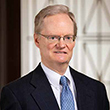Furnishing an “Elastic Currency”: The Founding of the Fed and the Liquidity of the U.S. Banking System
Abstract
This article examines how the U.S. banking system responded to the founding of the Federal Reserve System (Fed) in 1914. The Fed was established to bring an end to the frequent crises that plagued the U.S. banking system, which reform proponents attributed to the nation’s “inelastic” currency stock and dependence on interbank relationships to allocate liquidity and operate the payments system. Reform advocates noted that banking panics tended to occur at times of the year when the demands for currency and bank loans were normally at seasonal peaks and money markets were at their tightest. Moreover, they blamed the interbank system, upon which the banking system depended for seasonal accommodation and interregional payments, for transmitting shocks throughout the banking system. The article finds that after the Fed’s founding, country national banks were much less dependent on correspondent banks for seasonal liquidity and that peaks in lending by individual Reserve Banks aligned with the liquidity needs of banks in their districts. Further, the article shows that after the Fed’s founding, banks generally were less liquid and relied more heavily on deposits for funding, consistent with the idea that banks viewed the Fed as a reliable source of liquidity. The return of banking panics during the Great Depression, however, showed that the Fed was not, in fact, up to the challenge of serving as a full-fledged lender of last resort.
Citation
Mark A. Carlson and David C. Wheelock,
ldquoFurnishing an “Elastic Currency”: The Founding of the Fed and the Liquidity of the U.S. Banking System,rdquo
Federal Reserve Bank of St. Louis
Review,
First Quarter 2018, pp. 17-44.
https://doi.org/10.20955/r.2018.17-44
Editors in Chief
Michael Owyang and Juan Sanchez
This journal of scholarly research delves into monetary policy, macroeconomics, and more. Views expressed are not necessarily those of the St. Louis Fed or Federal Reserve System. View the full archive (pre-2018).
Email Us


